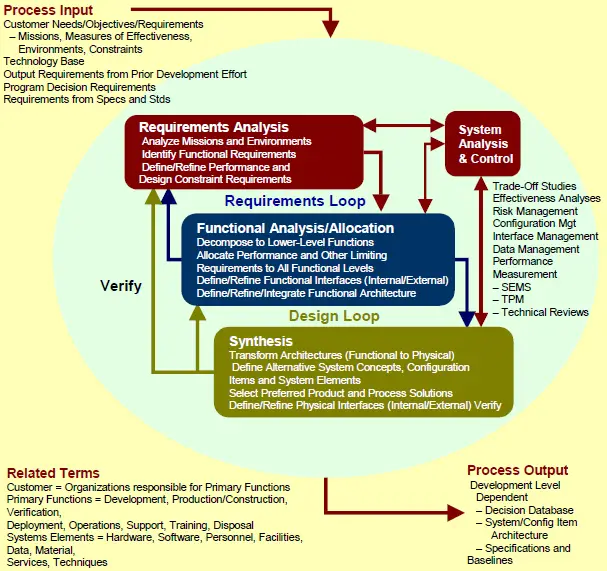The Systems Engineering Process is a comprehensive, iterative, and recursive problem-solving process, applied sequentially top-down by integrated teams. It transforms needs and requirements into a set of system product and process descriptions, generates information for decision-makers, and provides input for the next level of development. The process is applied sequentially, one level at a time, adding additional detail and definition with each level of development. [1]
The four (4) steps that comprise the SE Process are:
- Step 1: Requirements Analysis
- Step 2: System Analysis Control
- Step 3: Functional Analysis/Allocation
- Step 4: Design Synthesis

AcqTips:
- There is no one standard definition or systems engineering process. It’s a collection of ways and means across many disciplines. Best practices, guidebooks and lessons learned are a great source of systems engineering knowledge.
- Each program is different so there is no one process that perfectly fits. It’s the job of the systems engineer to modify the process to meets their programs needs the most
AcqLinks and References:
- [1] Space and Missile Systems Center (SMC) “Systems Engineering Primer & Handbook” – 29 April 2005
- Defense Acquisition Guidebook (DAG) – Chapter 4
- DAU Systems Engineering Fundamentals Guide – Jan 2001
- NASA Systems Engineering Handbook (large 9 Mb file)
- EIA-632 “Processes for Engineering a System” – 7 Jan 1999
- Iterations in the Systems Engineering Process Guide – 14 Sept 2009
- Systems Engineering Plan Outline – 20 April 2011
Updated: 7/17/2017
